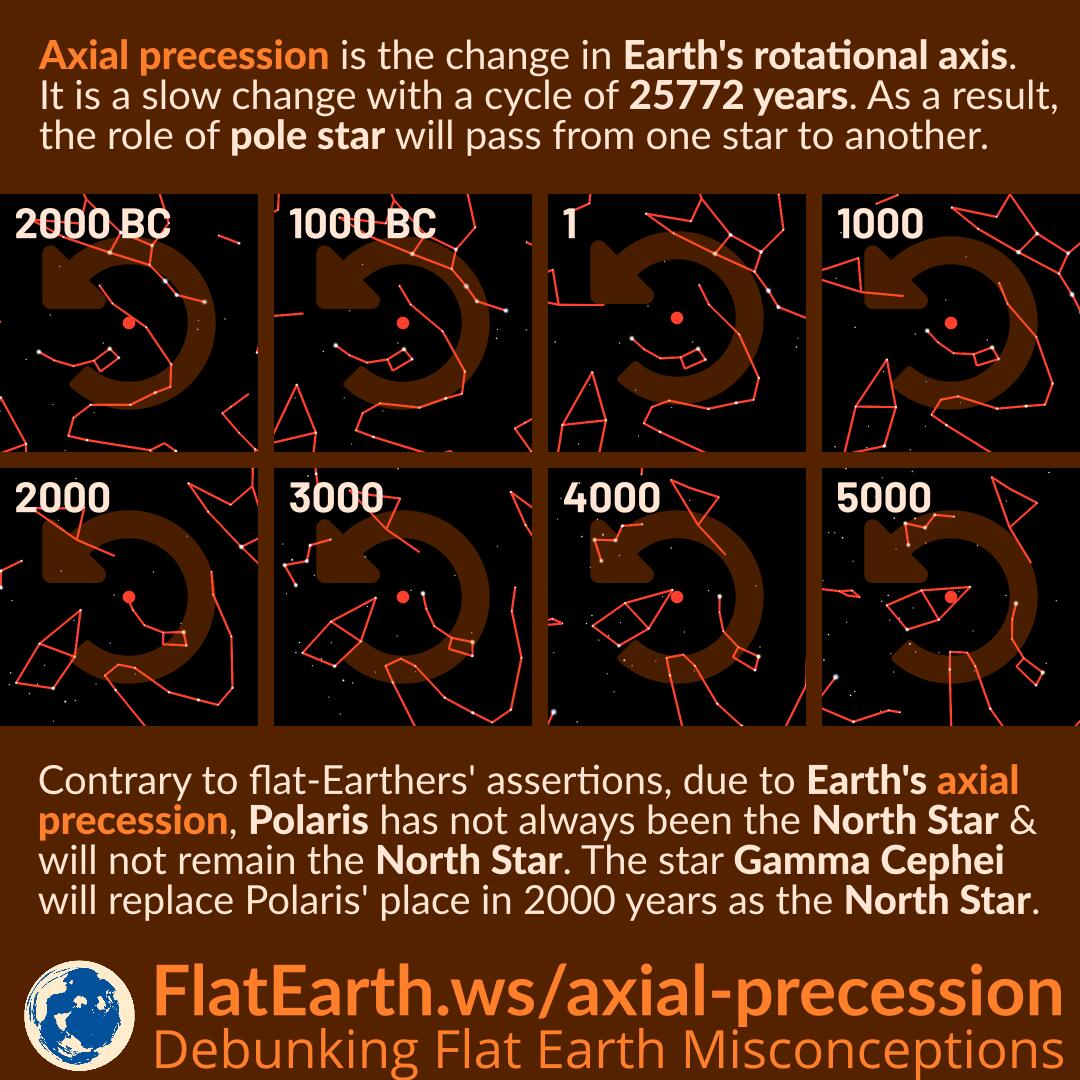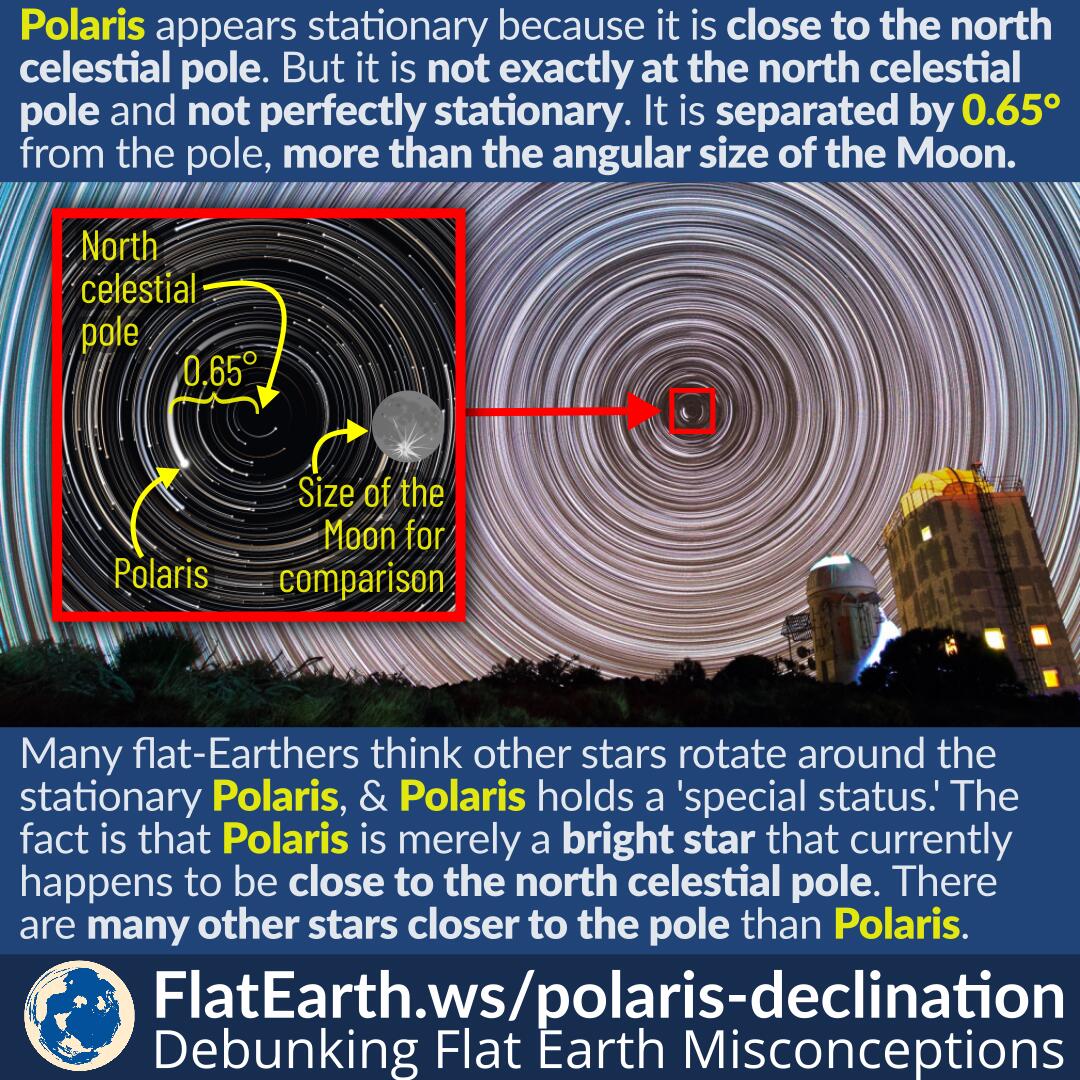Axial precession is the change in Earth’s rotational axis. It is a slow change with a cycle of 25772 years. As a result, the role of pole star will pass from one star to another.
Contrary to flat-Earthers’ assertions, due to Earth’s axial precession, Polaris has not always been the North Star and will not remain as the North Star. The star Gamma Cephei will replace Polaris’ place in 2000 years as the North Star.





